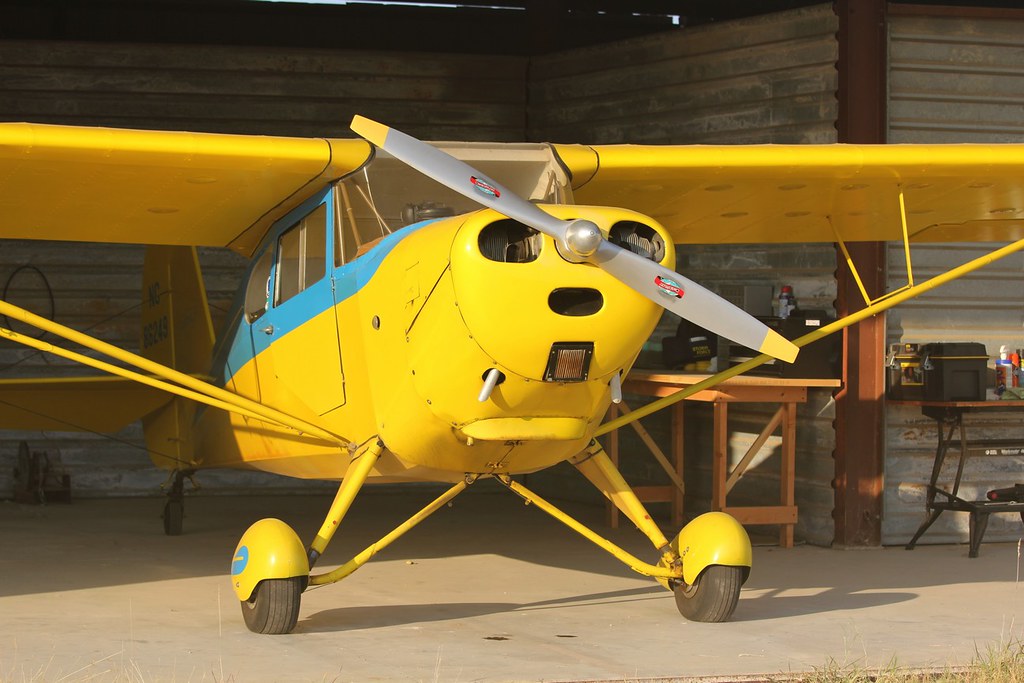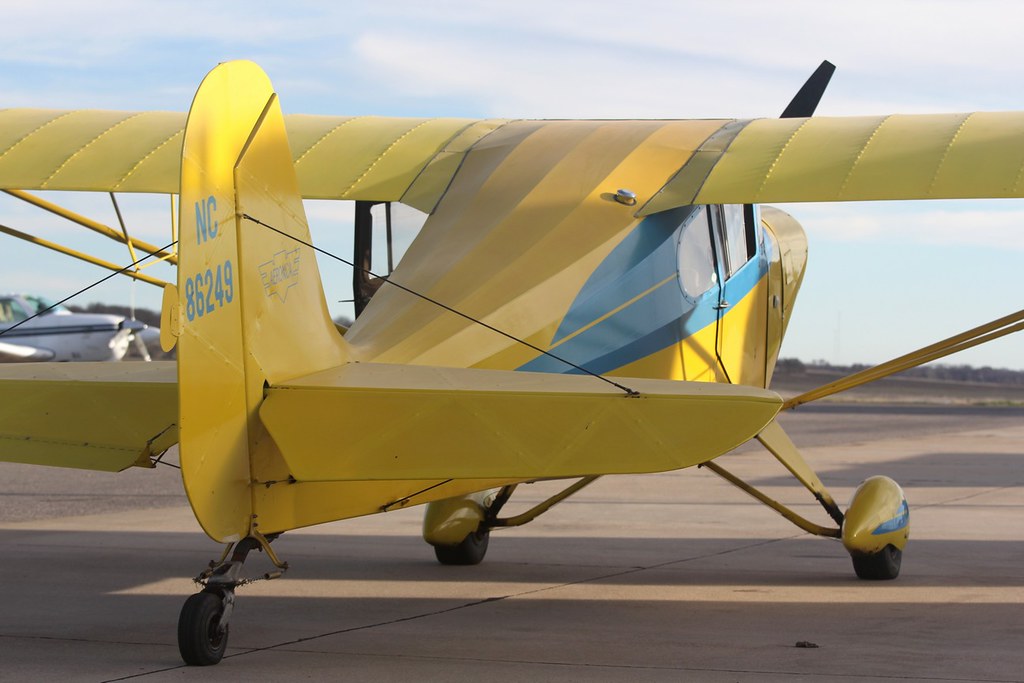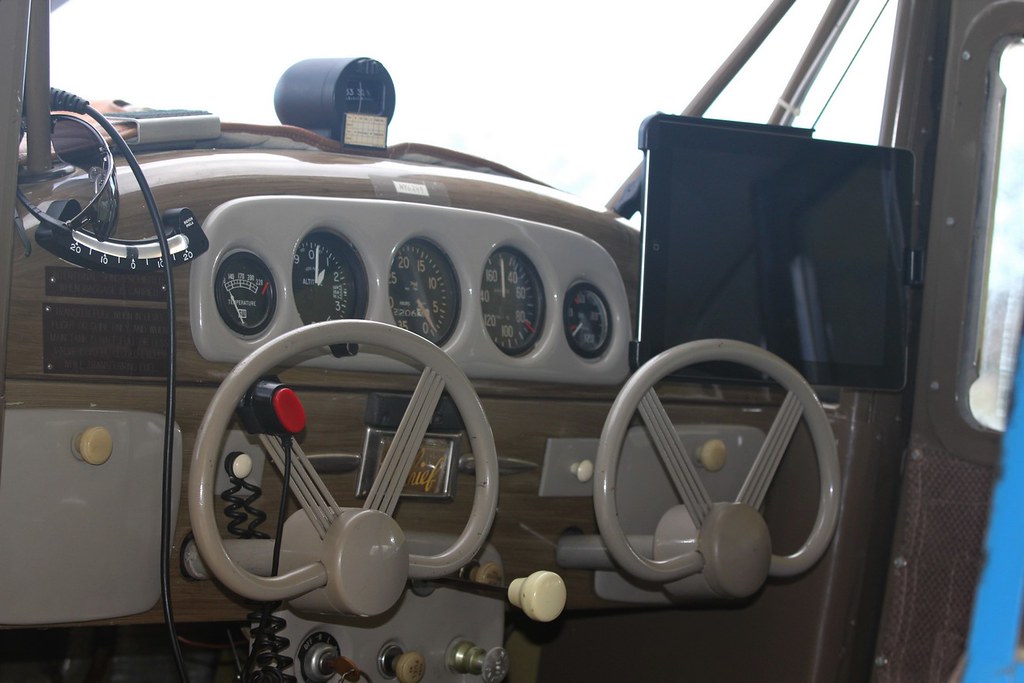Lois
Pre-Flight
- Joined
- Jan 7, 2022
- Messages
- 49
- Display Name
Display name:
Lois
Any 11AC owners out there?
“You are what your record says you are.” –Bill Parcells
If true, I suppose a corollary is that if you have Poly Fiber covered wings, you are what your “CAA Approved Airplane Flight Manual” says you are. Once you have everything tuned up and rigged correctly there probably isn’t a whole lot of room for “improvement.”*
A friend bought a 1946 Aeronca 11AC “Chief”-- well, most of one. It flunked the test in AD 2000-25-02 (spars) rather badly.
“Probable Cause: The pilot's inadequate preflight planning, which resulted in a takeoff over maximum gross weight from a turf runway of insufficient length in high density altitude conditions, the airplane’s resulting inability to attain a climb rate, and subsequent collision with trees.” Read the official report.
New wings were built and fitted, and “Chef’s” (inside joke) new weight is 787 lbs. balancing at (+14.92). It’s A-65-8 is ~ 750 hours SMOH. It spins a Sensenich w72ck42. Compression reads 71 to 77. It has the six original gauges / instruments so readings had to be estimated, they were plotted on a spreadsheet and “smoothed” into a curve.
Taking off from asphalt, 760 ft AMSL, 10 to 30*F , at 1250 lbs., informal test flights were conducted at altitudes between 3,000 and 6,000 feet into a < 10 mph wind, with numbers crunched to give true airspeed on a standard day.
11AC 1250 lbs.
A-65-8 (max rpm 2300)
W72CK-42 (max rpm 2300)
Rate of Climb ~ 400 fpm (at S.L. losing about 1% per 450 ft)
2300 ~ 2285 actual rpm gives ~ 90 mph burning ~ 4.9 gallons per hour at 3000 ft
2150 ~ 2135 actual rpm gives ~ 80 mph burning ~ 3.7 gallons per hour at 3000 ft
2000 ~ 1985 actual rpm gives ~ 70 mph burning ~ 3.0 gallons per hour at 3000 ft
* So, I weigh 135-ish, and I could easily fly this with my sister, daughter, or best friend (it’s not real wide) local and be well under gross. Or fly it at gross choosing between full baggage and half the aux tank or some baggage and 23 gallons. But if two linebackers want to buy a plane… Nope, especially if they need to lug their gym-bags.
“You are what your record says you are.” –Bill Parcells
If true, I suppose a corollary is that if you have Poly Fiber covered wings, you are what your “CAA Approved Airplane Flight Manual” says you are. Once you have everything tuned up and rigged correctly there probably isn’t a whole lot of room for “improvement.”*
A friend bought a 1946 Aeronca 11AC “Chief”-- well, most of one. It flunked the test in AD 2000-25-02 (spars) rather badly.
“Probable Cause: The pilot's inadequate preflight planning, which resulted in a takeoff over maximum gross weight from a turf runway of insufficient length in high density altitude conditions, the airplane’s resulting inability to attain a climb rate, and subsequent collision with trees.” Read the official report.
New wings were built and fitted, and “Chef’s” (inside joke) new weight is 787 lbs. balancing at (+14.92). It’s A-65-8 is ~ 750 hours SMOH. It spins a Sensenich w72ck42. Compression reads 71 to 77. It has the six original gauges / instruments so readings had to be estimated, they were plotted on a spreadsheet and “smoothed” into a curve.
Taking off from asphalt, 760 ft AMSL, 10 to 30*F , at 1250 lbs., informal test flights were conducted at altitudes between 3,000 and 6,000 feet into a < 10 mph wind, with numbers crunched to give true airspeed on a standard day.
11AC 1250 lbs.
A-65-8 (max rpm 2300)
W72CK-42 (max rpm 2300)
Rate of Climb ~ 400 fpm (at S.L. losing about 1% per 450 ft)
2300 ~ 2285 actual rpm gives ~ 90 mph burning ~ 4.9 gallons per hour at 3000 ft
2150 ~ 2135 actual rpm gives ~ 80 mph burning ~ 3.7 gallons per hour at 3000 ft
2000 ~ 1985 actual rpm gives ~ 70 mph burning ~ 3.0 gallons per hour at 3000 ft
* So, I weigh 135-ish, and I could easily fly this with my sister, daughter, or best friend (it’s not real wide) local and be well under gross. Or fly it at gross choosing between full baggage and half the aux tank or some baggage and 23 gallons. But if two linebackers want to buy a plane… Nope, especially if they need to lug their gym-bags.




